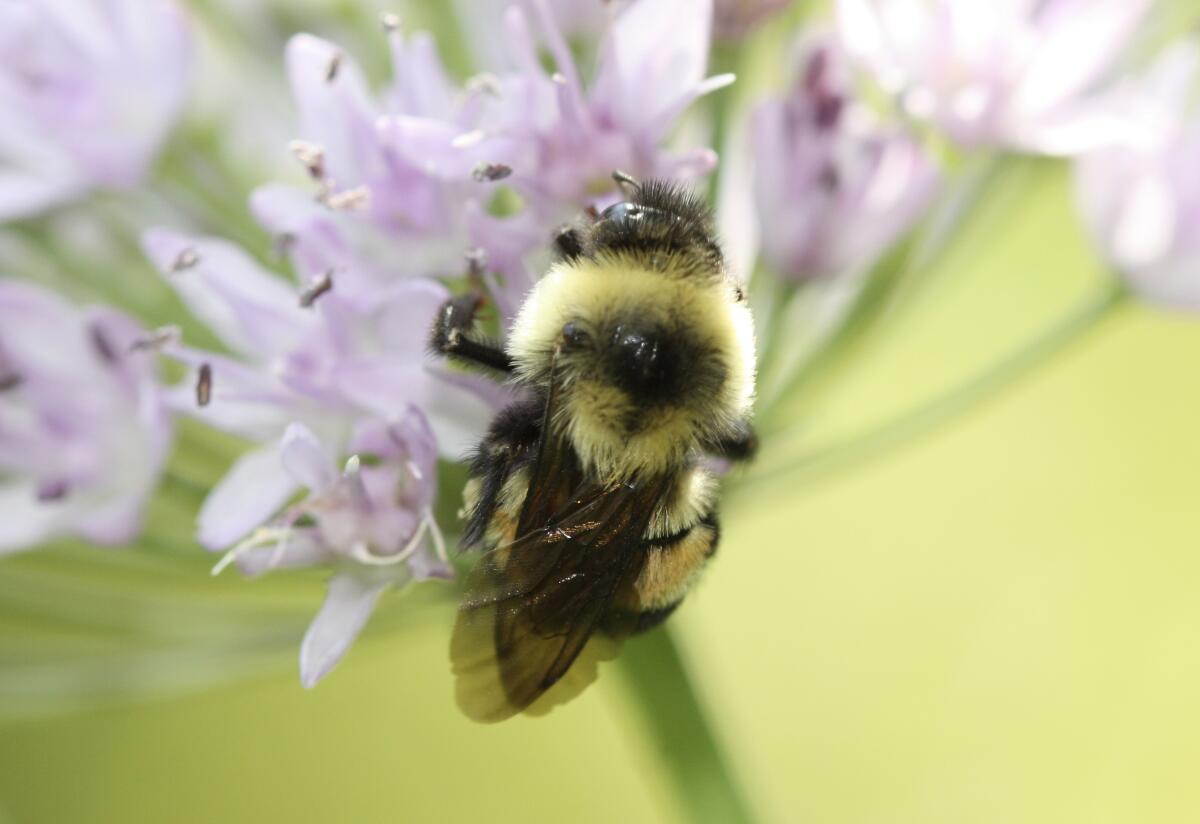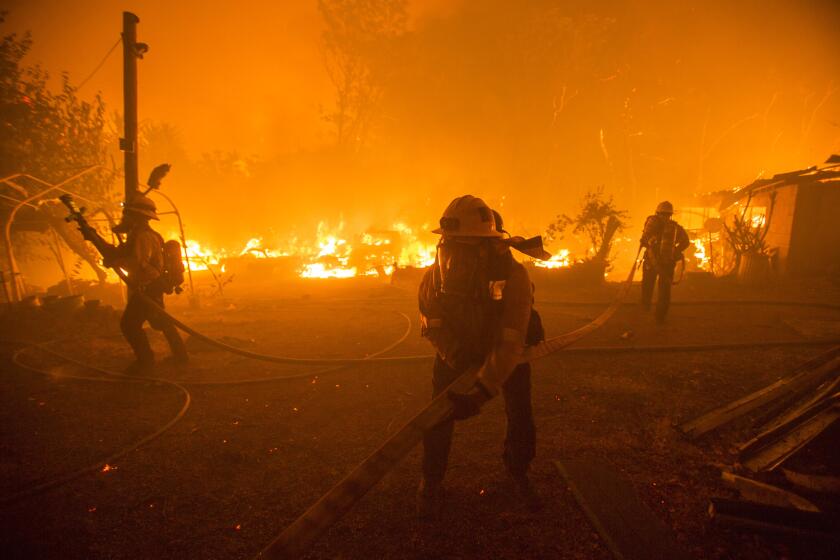Apodaca: Bees are in danger, and that doesn’t bode well for us

I’m worried about bees. This is another way of saying I’m worried about all of us, but I’ll come back to that point.
During the past year or so, bees regularly enter my house in Newport Beach through an open sliding door and experience what I can only describe as a death spiral. They buzz around the kitchen for a minute or two before landing on the floor, where they engage in an erratic dance of sorts, flipping and crawling in circles before finally expiring.
I’ve watched this disturbing pattern repeat, sometimes as often as five or six times a week, and I feel a bit helpless and heartbroken every time. I never paid much heed to bees before, other than to run from them in a highly undignified manner whenever I feared being stung. But now I’m worried.
My concern was heightened a few months ago while on a walk with my dog. As we strolled across a section of our usual path near Newport’s Back Bay, I was startled to discover that the ground was blanketed with hundreds of dead bees. The bees that wandered into my house to die might have simply reached the end of their short, workaholic lives, but this scene couldn’t be so easily explained away. It seemed unnatural.
What’s going on?
While I can’t draw any specific conclusions about the dead bees I’ve encountered, it turns out that bees generally are in grave danger.
Take bumblebees, those round, fuzzy pollinators that excel at helping flowers, fruits and vegetables produce seeds. A large, influential study published early last year in the journal Science found that the bumblebee population in North America had declined by nearly 50% since the period prior to 1974.
Other bee species had disappeared entirely in some areas, it found.
The reasons why are complex, but researchers have tied these massive bee die-offs to several intertwined events.
The widespread overuse of pesticides and herbicides is one cause. The loss of diverse food sources, which bees depend upon for a healthy diet, is another harmful trend that has been linked to the rise of industrialized farming resulting in huge swaths of land turned over to single crops. Urbanization and the accidental importation of a type of mite that weakens bees are also to blame.
Add to that toxic mix one more devastating factor. Climate change — or as a lead author of the study called it, “climate chaos” — has led to temperature extremes, severe droughts and habitat-depleting weather events that have made life for bees far more precarious.
They’re not the only ones in trouble. According to another study, 40% of insect species worldwide are in decline for similar reasons.
A handful of UC Irvine scholars are studying flooding, erosion and the effects of wildfires on water quality. Another is looking at how climate change affects public health.
But the loss of bee populations is particularly distressing because we greatly rely on them to carry out the important job of pollinating many of the fruits, vegetables, nuts and flowers that we consume. Without bees, much of the produce that we have come to expect to be widely abundant for a rich and varied diet would become more scarce, and our nutrition would suffer.
Indeed, bees are such a critical part of our food chain — responsible for pollinating more than one-third of crops worldwide — that if they went extinct our own survival would be in jeopardy as well. Forgive the overused metaphor, but bees are the quintessential canary in the coal mine, warning us of peril.
There’s a common thread here that we can’t ignore. Just as is the case with climate change, we are largely responsible for the bee apocalypse.
“Nature likes a balance,” filmmaker and beekeeper Peter Nelson said. “By trying to shape our environment too heavily we can upset the balance. We humans have a real track record of that.”
Nelson lives in New York State’s bucolic Hudson River Valley, but a few years ago his documentary “The Pollinators” was an award winner at the Newport Beach Film Festival.
The gorgeously photographed film relates a gripping story about honey bees, the generalists of the bee world, which are trucked around the country to pollinate crops in a tightly timed effort to replace the increasingly scarce native bees. It includes interviews with farmers, scientists, chefs and academics who shed light on the threats to honey bees, the impact on our food supply and the delicate web of interdependency among plants and animals that is under duress.
What can we do to change the dire scenario? Actually quite a lot, Nelson said.
Reduce the use of pesticides and herbicides, he suggested, and steer landscaping choices away from pristine lawns and toward native plants and “pollinator gardens.”
Don’t underestimate the power of consumers, he said. Favoring locally grown produce and steering food choices toward seasonal offerings can have a positive impact.
We should also make our concerns known to decision-makers, from local planning boards to federal legislators, and support policies that protect bee habitats.
For too long we have manipulated the world we live in — in pursuit of profits or visions of progress — without thinking through the consequences of our actions.
Now, because of us, bees are in big trouble, and those “fascinating and beautiful creatures,” as Nelson describes them, need us to change our ways. Our future depends upon it too.
All the latest on Orange County from Orange County.
Get our free TimesOC newsletter.
You may occasionally receive promotional content from the Daily Pilot.





